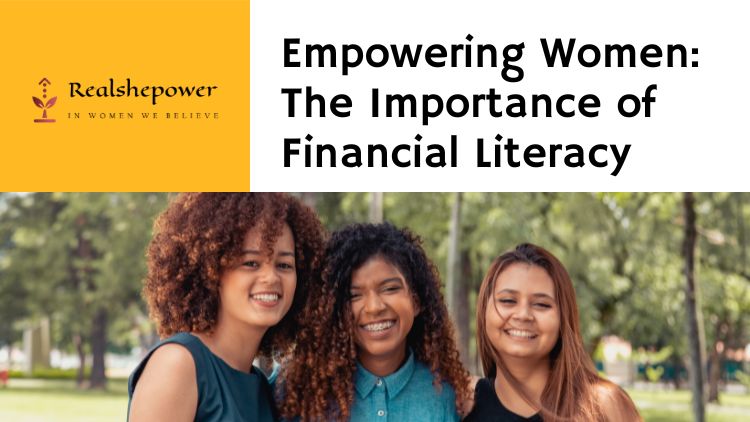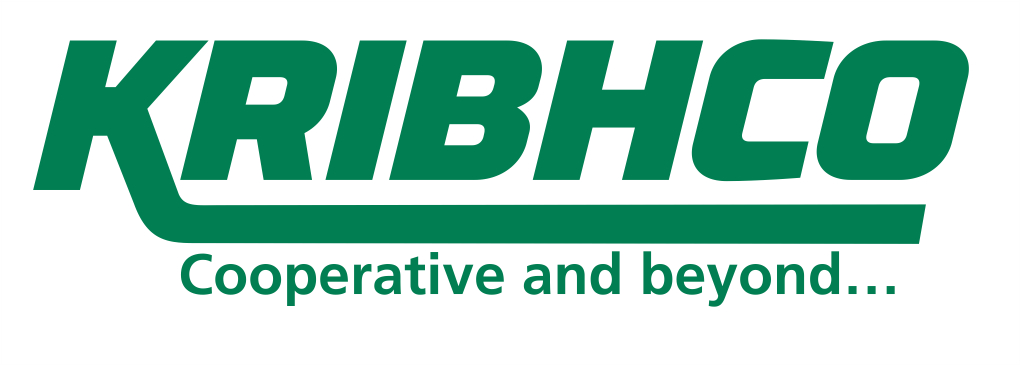Financially Fearless: Why Financial Literacy is Vital for Women


Financially Fearless: Why Financial Literacy is Vital for Women
Picture this: a woman confidently navigating the complex world of personal finance, making sound investment decisions, and effortlessly managing her money. She’s financially fearless. But the reality is that many women find themselves struggling to achieve financial independence and security. The gender pay gap, life expectancy differences, and societal expectations often place women at a disadvantage when it comes to their financial well-being.
In today’s rapidly changing economy, financial literacy is more crucial than ever. It equips individuals with the knowledge and skills needed to make informed financial decisions, create wealth, and secure a stable future. While financial literacy is important for everyone, it holds particular significance for women. Let’s explore why.
Table of Contents
The Benefits of Financial Literacy for Women

1. Empowerment through Knowledge
Financial literacy empowers women by providing them with the knowledge they need to take control of their finances. It equips them with the ability to understand financial concepts, decipher complex jargon, and make informed decisions about their money. By becoming financially literate, women can confidently manage their finances, set achievable goals, and plan for a prosperous future.
2. Increased Financial Independence
Financial independence is a cornerstone of a fulfilling life. By gaining financial literacy, women can assert their independence and reduce reliance on others for financial support. They can make independent choices regarding their careers, investments, and retirement planning. Financially fearless women are not bound by financial constraints and have the freedom to pursue their dreams and aspirations.
3. Overcoming the Gender Wealth Gap
The gender wealth gap, fueled by various factors such as lower earnings, career breaks, and societal norms, leaves women at a disadvantage when it comes to accumulating wealth. However, financial literacy can bridge this gap by enabling women to maximize their earnings, make strategic investments, and grow their wealth over time. It empowers them to build a strong financial foundation and break free from the cycle of financial insecurity.
4. Building Financial Security
Financial security is crucial for peace of mind and overall well-being. Women who are financially literate are better equipped to build a foundation of financial security for themselves and their families. They can navigate life’s uncertainties, such as job loss or unexpected expenses, by having emergency funds and proper insurance coverage. Financially literate women understand the importance of saving for the future and are more likely to prioritize retirement planning, ensuring they have a comfortable and worry-free retirement. By making wise financial decisions and avoiding common pitfalls, they can protect their assets and weather financial storms with confidence.
5. Making Informed Financial Decisions
Financial literacy empowers women to make informed decisions that align with their goals and values. It allows them to evaluate financial products and services, such as loans, credit cards, and investment opportunities, with a critical eye. With a solid understanding of financial concepts like interest rates, compounding, and risk management, women can avoid predatory practices and make choices that are in their best interest. Financially literate women can assess the trade-offs, risks, and potential returns associated with various financial options, ensuring that their hard-earned money is working for them effectively.
6. Teaching Future Generations
Financial literacy is not just about personal empowerment; it also has a generational impact. When women become financially literate, they are better equipped to teach their children about money management, instilling healthy financial habits from an early age. By breaking the cycle of financial illiteracy, women can set their families on a path to financial success and independence. The knowledge and skills passed down through generations can create a ripple effect, empowering future generations of women to be financially fearless.
Challenges Women Face in Achieving Financial Literacy

1. Cultural and Societal Factors
Women often face cultural and societal barriers that hinder their access to financial education and resources. Traditional gender roles and expectations can discourage women from taking an active role in managing their finances, perpetuating the notion that financial matters are primarily the domain of men. Overcoming these barriers requires challenging societal norms and fostering an inclusive environment that encourages women’s financial empowerment.
2. Confidence Gap
Another challenge women face is the confidence gap when it comes to financial matters. Research suggests that women often underestimate their financial abilities, leading to lower levels of engagement with financial topics and decision-making. To address this gap, it is essential to provide educational resources and support systems that promote confidence-building and encourage women to take charge of their financial lives.
3. Lack of Financial Education
Financial literacy education is not widely incorporated into school curriculums, leaving many women without the foundational knowledge required to navigate the financial landscape. The lack of financial education can lead to poor financial decision-making, debt accumulation, and limited wealth-building opportunities. Recognizing the importance of financial education and advocating for its inclusion in educational institutions can empower future generations of financially fearless women.
Steps to Enhance Financial Literacy

1. Seek Knowledge and Education
To enhance your financial literacy, take an active role in seeking knowledge and education about personal finance. Attend workshops, seminars, or webinars focused on financial literacy. Look for online courses or certification programs that cover various aspects of personal finance. Engage with financial experts through podcasts, videos, or online forums. The more you immerse yourself in learning, the better equipped you’ll be to make informed financial decisions.
2. Read Books and Articles
Reading books and articles written by financial experts can provide valuable insights and expand your understanding of personal finance. Look for books on topics such as budgeting, investing, retirement planning, and debt management. Explore reputable financial websites or blogs that offer articles and resources on financial literacy. Reading different perspectives and approaches will help you develop a well-rounded understanding of financial concepts.
3. Utilize Online Tools and Apps
In today’s digital age, numerous online tools and mobile apps are available to assist with financial management. These tools can help you track your expenses, create budgets, monitor your investments, and set financial goals. Take advantage of these resources to simplify and streamline your financial tasks. Look for apps that provide educational content, calculators, and budgeting features to enhance your financial literacy journey.
4. Work with a Financial Advisor
Consider working with a financial advisor who specializes in working with women to enhance their financial literacy. A financial advisor can provide personalized guidance, help you set financial goals, and create a tailored financial plan. They can offer insights into investment strategies, retirement planning, and risk management. Collaborating with a trusted advisor can provide you with the confidence and support you need to navigate complex financial decisions.
5. Engage in Financial Conversations
Engaging in conversations about personal finance can be an effective way to enhance your financial literacy. Discuss financial topics with friends, family members, or colleagues who have knowledge or experience in managing their finances. Join online communities or forums where individuals share insights and advice about personal finance. By participating in these conversations, you can gain new perspectives, learn from others’ experiences, and develop a deeper understanding of financial concepts.
6. Track Your Expenses and Budget
Tracking your expenses and creating a budget are essential steps towards financial literacy. Start by recording all your income and expenses to get a clear picture of your financial situation. Categorize your expenses and identify areas where you can cut back or optimize your spending. Use this information to create a budget that aligns with your financial goals. Regularly review your budget and make adjustments as needed to stay on track.
7. Start Saving and Investing
Develop a habit of saving and investing to grow your wealth and achieve financial security. Set aside a portion of your income for savings, and explore different savings vehicles such as high-yield savings accounts or investment accounts. Additionally, consider investing in stocks, bonds, or mutual funds to generate long-term returns. Research investment options, consult with professionals if needed, and make informed decisions based on your risk tolerance and financial goals.
8. Monitor and Review Your Financial Progress
Regularly monitor and review your financial progress to assess your growth and make necessary adjustments. Track your investments, review your savings contributions, and evaluate your debt reduction efforts. Use financial tracking tools or spreadsheets to keep a record of your financial activities. Analyze your progress towards your financial goals and celebrate milestones along the way. Regular review will help you stay accountable and make informed decisions as you continue to enhance your financial literacy.
The Technical Side of Financial Literacy

Financial literacy goes beyond basic knowledge of financial concepts. It involves understanding the technical aspects of personal finance and mastering various tools and strategies to effectively manage money. Let’s dive deeper into the technical side of financial literacy to equip women with the skills needed to become financially fearless.
1. Understanding Basic Financial Concepts
To navigate the financial landscape, it is crucial to have a solid understanding of fundamental financial concepts. These concepts include:
- Compound interest: Understanding how interest compounds over time can help you make informed decisions about savings and investments. It allows you to leverage the power of compounding to grow your wealth.
- Inflation: Being aware of inflation and its impact on purchasing power helps you plan for the future. It ensures that you account for rising prices when setting financial goals and making investment choices.
- Risk and return: Recognizing the relationship between risk and return is essential for making investment decisions. Different investment options carry varying levels of risk, and understanding this trade-off enables you to create a diversified portfolio aligned with your risk tolerance and goals.
- Asset allocation: Understanding how to allocate your investments across different asset classes, such as stocks, bonds, and real estate, can help optimize your portfolio’s risk and return profile.
2. Mastering Budgeting and Money Management
Budgeting is a key component of financial literacy. It involves creating a comprehensive plan for managing income and expenses. Here are some technical aspects of budgeting and money management:
- Tracking expenses: Utilize tools like budgeting apps or spreadsheets to monitor your spending habits. Categorize expenses to identify areas where you can reduce costs and allocate funds more efficiently.
- Cash flow management: Understand the flow of money in and out of your accounts. Monitor your income streams, such as salary, investments, or side hustles, and ensure they cover your expenses while leaving room for saving and investing.
- Debt management: Develop strategies to manage and reduce debt effectively. This includes understanding interest rates, prioritizing debt payments, and considering consolidation options.
3. Developing Good Saving and Investing Habits
Saving and investing are key components of building wealth and securing a financially fearless future. Here are some technical aspects to consider:
- Emergency funds: Establish an emergency fund to cover unexpected expenses. Aim to save three to six months’ worth of living expenses in a liquid account that can be accessed quickly.
- Tax-efficient saving and investing: Understand tax-advantaged accounts such as Individual Retirement Accounts (IRAs), 401(k)s, or Health Savings Accounts (HSAs). Maximize contributions to these accounts to benefit from tax advantages and grow your savings more effectively.
- Investment research: Develop the skills to research and evaluate investment options. Analyze financial statements, understand key performance indicators, and consider factors like company valuation, industry trends, and competitive landscape.
- Diversification: Spread your investments across different asset classes and sectors to minimize risk. Diversification can help protect your portfolio during market fluctuations and increase the likelihood of consistent returns over time.
4. Retirement Planning and Long-Term Investing
Planning for retirement requires technical knowledge and long-term thinking. Consider the following aspects:
- Retirement savings calculators: Utilize online calculators to estimate the amount you need to save for retirement based on factors such as your desired lifestyle, expected lifespan, and investment returns.
- Investment strategies: Explore different investment strategies tailored to your retirement goals and risk tolerance. Consider long-term growth investments, such as index funds or target-date retirement funds, to benefit from compounding returns.
- Social Security and pension planning: Understand how Social Security benefits and pension plans work. Consider the impact of retirement age, spousal benefits, and other factors on your overall retirement income.
5. Risk Management and Insurance
Insurance plays a crucial role in financial planning and risk management. Consider the following technical aspects:
- Health insurance: Understand the different types of health insurance plans, such as Health Maintenance Organizations (HMOs) or Preferred Provider Organizations (PPOs). Evaluate coverage options, premiums, deductibles, and out-of-pocket costs to make informed decisions.
- Life insurance: Determine the appropriate coverage amount and type of life insurance based on your financial obligations and dependents. Understand the differences between term life insurance and whole life insurance, and evaluate the benefits and costs of each.
- Homeowner’s/renter’s insurance: Protect your assets by ensuring you have adequate coverage for your home or rental property. Understand policy terms, coverage limits, deductibles, and exclusions.
6. Staying Informed and Continuously Learning
Financial literacy is an ongoing journey. Staying informed and continuously learning about financial trends and developments is essential. Consider the following technical aspects:
- Financial news and publications: Stay updated on financial news through reputable sources. Read books, blogs, and articles that cover personal finance, investment strategies, and economic trends.
- Continuing education: Participate in workshops, seminars, or online courses that offer advanced financial education. Explore certifications such as Certified Financial Planner (CFP) to enhance your knowledge and credibility.
- Technology and financial tools: Embrace financial technology (FinTech) to streamline your financial management. Utilize budgeting apps, investment platforms, and robo-advisors to automate tasks, track progress, and access personalized financial advice.
By mastering the technical side of financial literacy, women can make informed decisions, confidently manage their money, and navigate the complexities of the financial world. Empower yourself with knowledge, leverage the available tools and resources, and continue to expand your financial skills to become truly financially fearless.
FAQs

Q: Why is financial literacy particularly important for women?
A: Financial literacy is crucial for women because it empowers them with the knowledge and skills to make informed financial decisions, increases their financial independence, and helps bridge the gender wealth gap.
Q: How can women overcome the confidence gap in financial matters?
A: Women can overcome the confidence gap by seeking education, building their financial knowledge, and surrounding themselves with supportive networks that encourage confidence-building and empowerment.
Q: What can society do to promote financial literacy among women?
A: Society can promote financial literacy among women by advocating for comprehensive financial education in schools, challenging societal norms that discourage women’s financial engagement, and providing accessible resources and support systems for women seeking to enhance their financial literacy.
Conclusion
Financially Fearless: Why Financial Literacy is Vital for Women
Becoming financially fearless is a journey that requires dedication, education, and a willingness to take control of one’s financial future. For women, the importance of financial literacy cannot be overstated. It provides the tools necessary to overcome financial challenges, break free from societal constraints, and build a strong foundation of financial independence.
By embracing financial literacy, women can empower themselves, bridge the gender wealth gap, and create a better future for themselves and generations to come. Let us strive for a world where all women are financially fearless, confidently navigating the intricate paths of personal finance and securing a prosperous future. The time for women’s financial empowerment is now.
More on Financial Freedom
You can now write for RSP Magazine and be a part of the community. Share your stories and opinions with us here.






Have you ever considered about adding a little bit more than just your articles? I mean, what you say is important and all. But think of if you added some great photos or video clips to give your posts more, “pop”! Your content is excellent but with images and video clips, this blog could undeniably be one of the greatest in its niche. Amazing blog!